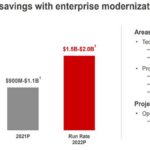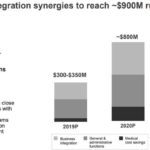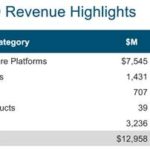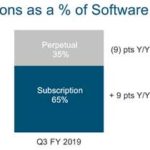Current Price: $56 Target Price: Raising to $63 from $54
Position size: 5% TTM Performance: 24%
CSCO reported very strong 3Q results. Sales and EPS were better than expected and guidance was ahead of consensus. Higher tariffs are included in this better than expected guidance. Adjusted revenue was up 6% and EPS was up 18% (aided by buybacks). They delivered growth across all geographies and businesses, improving margins, double-digit EPS growth, and continued solid cash generation. “We had another strong quarter of performance across the business, demonstrating our ability to execute despite the ongoing uncertainty in both the macro and geopolitical environments.”
Thesis intact, key takeaways:
· Cisco is helping their customers change their technology infrastructure to accommodate new technologies like cloud, AI, IoT, 5G and WiFi 6.
· Their evolving portfolio of products help customers navigate this complexity by helping them simplify, automate, and secure their infrastructure. They are in the early innings of evolving network architectures, so there is a lot of runway to the growth they are seeing.
· Cisco has the only integrated multi-domain intent-based architecture with security at the foundation. It is designed to allow customers to securely connect their users and devices over any network to any application, no matter where they are.
· Tariff increase to 25% is in guidance and offset with pricing and supply chain optimization. “We see very minimal impact at this point.”
· Transition to recurring revenue model. The percentage of recurring revenue is now ~1/3 – they set a goal of 37% by 2020. They are on track to drive software revenue to 30% of total revenue by FY20. Subscription revenue was 65% of total software revenue, up 9 points YoY. This transition will drive an upward trend in CSCO’s margins over the next several years.
· Their largest segment, Infrastructure Platforms (58% of revenue), was up +5% YoY with solid growth across all businesses, switching had another good quarter with growth driven by the continued ramp of the Cat 9K. Routing grew driven by SD-WAN.
· Security was up 21% – pleased also with the integration of Duo into the security portfolio.
· Service revenue was up 3% driven by software and solutions support.
· By geography, Americas was flat, EMEA was up 9% and APJC was up 6%. Total emerging markets was up 5% with the BRICS plus Mexico down 2%.
· In terms of customer segments, enterprise was up 9%, commercial grew 5%, public sector was up 10%, and service provider continues to be weak, down 13%. This is similar to reports from competitors like Juniper which saw weakness in service provider. Service provider revenue is lumpy from quarter to quarter, it’s driven by only a few large customers whose capex is down YoY and will likely be weak until increased network build out of 5G.
Valuation:
· They have a 2.5% dividend yield which is easily covered by their FCF.
· Buyback authorization now at $18B, or over 7% of their current market cap.
· They have ~$17B in net cash. In the quarter they returned $7.5B to shareholders – $1.5B in dividends and $6B in buybacks.
· Forward FCF yield is 6.5%, well above sector average and is supported by an increasingly stable recurring revenue business model and rising FCF margins.
· The company trades on a hardware multiple, but the multiple should expand as they keep evolving to a software, recurring revenue model. Hardware trades on a lower multiple because it is lower margin, more cyclical and more capital intensive.
Thesis on Cisco:
· Industry leader in strong secular growth markets: video usage, virtualization and internet traffic.
· Cisco is the leader in enterprise switching and service provider routing and one of the few vendors that can offer end-to-end networking solutions.
· Significant net cash position and strong cash generation provide substantial resources for CSCO to develop and/or acquire new technology in high-growth markets and also return capital to shareholders.
· Cisco has taken significant steps to restructure the business which has helped reaccelerate growth and stabilize margins.
$CSCO.US
[tag CSCO]
Sarah Kanwal
Equity Analyst, Director
Direct: 617.226.0022
Fax: 617.523.8118
Crestwood Advisors
One Liberty Square, Suite 500
Boston, MA 02109
www.crestwoodadvisors.com
PLEASE NOTE!
We moved! Please note our new location above!








